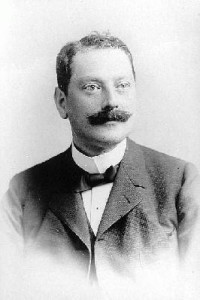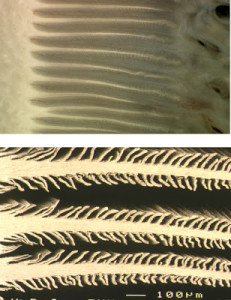 CVMDL Director Sandy Bushmich reminded me of a rare phenomenon affecting about one percent of Lyme equine patients, she said.
CVMDL Director Sandy Bushmich reminded me of a rare phenomenon affecting about one percent of Lyme equine patients, she said.
It’s called the Herxheimer effect. (Named after Karl Herxheimer, a German doctor who discovered it while developing a treatment for Syphillis before being murdered by the Nazis.)
Herx-ing happens when the antibiotics do their job and kill off lots of the targeted bacteria (In Lyme cases, this would be Borrelia burdorferi.)
But then the bug die-off has a toxic impact. The waste-eliminating organs (kidney, liver) have to work overtime to rid the body of the die-off and detoxify.
In humans, patients feel crappy, with bad headaches and flu-like symptoms. They feel even worse than they felt before being treated.
In horses, a Herxheimer reaction will be similar to humans but it can have a potentially devastating effect on the laminae.
 Laminae are tiny features that secure the coffin bone to the hoof wall. When they swell or become irritated, all hell breaks loose. If these comb-like structures get really inflamed, the coffin bone will separate from the hoof wall.
Laminae are tiny features that secure the coffin bone to the hoof wall. When they swell or become irritated, all hell breaks loose. If these comb-like structures get really inflamed, the coffin bone will separate from the hoof wall.
That’s founder.
No one wants a foundered horse.
Monitoring your horse as it responds to treatment is vital, Bushmich said.
I wasn’t aware that the percent of horses reacting to treatment for Lyme by experiencing a Herx reaction was so small, so I appreciate this article. Yet my mare is a statistic to that effect. The details of her case study are too numerous to fit here and extend to more than just the Herxing, but she began treatment for Lyme after a series of tests through Cornell (noting that she was at that time well managed for Cushings and IR). The situation quickly became a perfect storm. Where most horses would show improvement (almost like a diagnosis-confirming response) a few days after treatment with Doxcycycline, the mare became increasingly laminitic then foundered, eventually rotating to 10 degrees. This was a “worse before it became better” scenario, where “worse” couldn’t have been more detrimental. I had a choice between a backhoe and extending my search beyond my local clinic (a stellar team but stymied for answers) for medical triage. I considered any/all modalities and hoof specialists and from them enlisted a cadre who would work together. In a nutshell I learned to see treatment as something carried on at a cellular/molecular level. Two years later my mare is both “under new, enlarged management” and under saddle. There has been enough drama to make a high-concept novel, or more exactly a ‘novel’ way to integrate de-toxifying, systemic healing, nutrition and bio-mechanics (dare I simplify the wondrously complex). I’m deeply grateful for the exceptional and committed specialists who came together to make the improbable happen, and unwittingly provided an exemplar of possibility for those in similar straits.
Thanks so much for your comment here, Joan. It sounds like you have done above and beyond. Your mare is lucky to have you.
Joan. I am just starting treatment on my
Mare (first dose was last night). Awoke this morning to find her with the shivers and very reluctant to move. No heat in the hoof, HR, temp and respiration is all normal. Seemed very neurological. I would love to talk with you about this treatment. We are in SC and vets don’t see Lyme here. We are all at a bit of a loss of what to do. If you don’t mind would you call me. 864-414-8738.
THE EXACT SAME THING IS HAPPENING TO MY MARE! Please share the details of your quest! At times, she is up and eating happily, others times she’s down, shaking and groaning in pain.
I am trying to manage her side effects as best we can, but I feel that we’re running out of time.
I hope this thread is still open. Dates are pretty old.
I’m having the same issue with gelding and would love more information on how to better support him while he’s being treated.